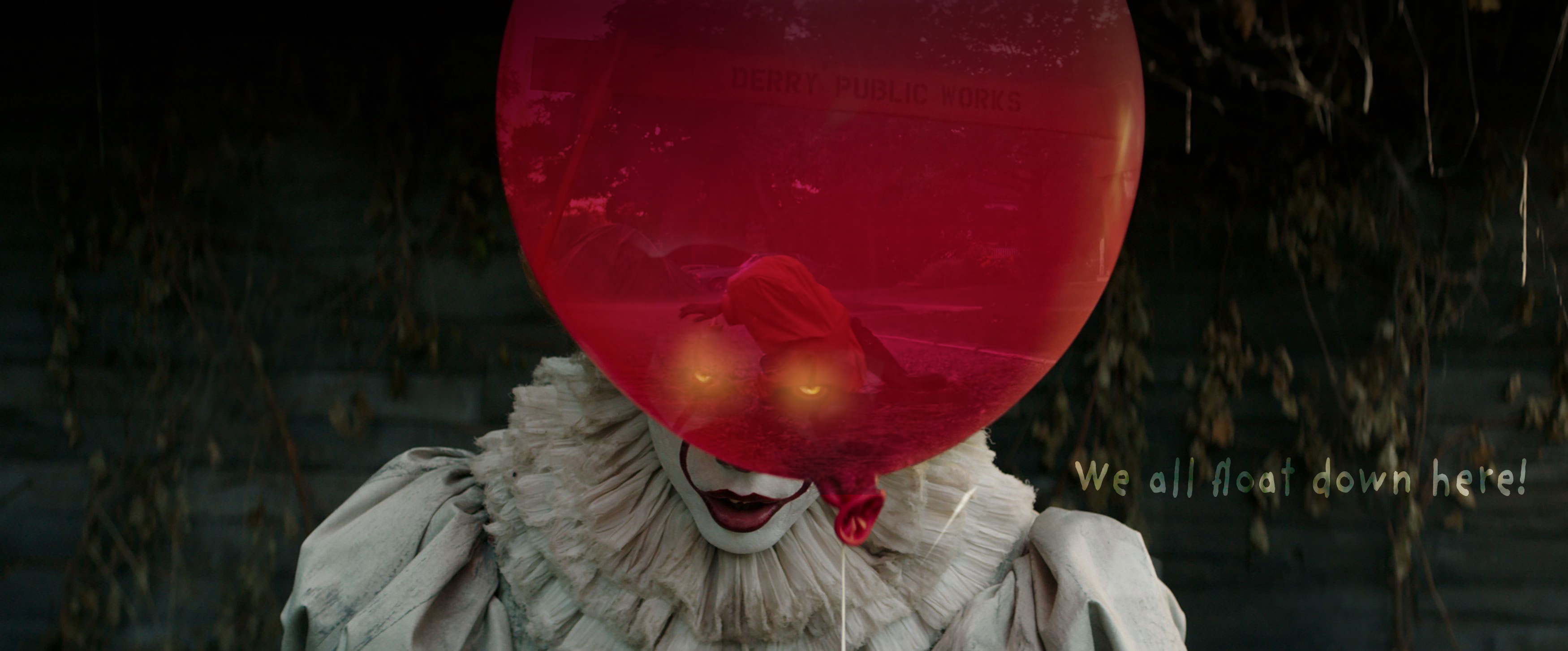At the peak of 80’s nostalgia, New Line Cinema issues the first (film) adaptation of Stephen King’s killer clown. As an extension of Warner Brothers, the distributor has never put out a horror movie with a budget nearing $35 million or worked with KatzSmith productions (Next up is a “Beetlejuice” sequel). After entering development in 2009 with director Cary Fukunaga attached, “It” now carries his writing credit and tells the first half of the lengthy novel. With Andy Muschietti behind the camera, the story moves from the 50’s to the 80’s, making the “Stand By Me” vibes very prominent.
But this film is not “Stand By Me,” no, because the Loser’s Club is made up of kids who aren’t made up of much at all. There is the hypochondriac, the chatterbox, the Jewish kid, the new kid, the black kid, the kid with a stutter and the girl. Missing anything? Oh, the new kid is also chubby. And he rocks out to New Kids on the Block, which is admittedly hilarious because Jeremy Ray Taylor is lovable as Ben. The whole cast does wonders for their characters, bringing them to life by way of the young ensemble’s shared chemistry.
Bill Denbrough (an always reliable Jaeden Lieberher) becomes the leader of this misfit alliance after his 7-year-old brother, Georgie, goes missing in a scene where his yellow raincoat is tracked along the road’s sewer system in a melancholy opening rain shot. This tragedy, and each member’s nightmarish clown attack solidify a bond between the friends to battle an evil entity that manifests itself (and each child’s individual fear) every 27 years.
Pennywise the Dancing Clown (Bill Skarsgard) has remained a menacing figure in the small town of Derry, Maine throughout its history. However, this time around, the kids are not as scared. Especially Beverly Marsh (Sophia Lillis, breaking out), a girl with a sexually-abusive father who is misunderstood by her peers (more on her in a minute). She often is the one to take charge and instill bravery in the rest of the gang who lack a personal reason to defeat the clown like Bill. These are tough kids though – they live in a world without cellphones and authoritarian parents, where summer was spent on a bicycle scurrying away from bullies in the woods.
These bullies, the so-called Bowers Gang, are slightly more brutal than the average playground menace because the leader, Henry Bowers (Nicholas Hamilton), is a psychopath who also happens to have an abusive father. Beverly instigates the memorable scene from the book where the losers pelt the bullies with stones in a match set on two opposite sides of a stream. It is one of several exceptional scenes featuring her character in a film that strikes a high note with her bloody bathroom sink disaster but comes crashing down when her damsel-in-distress is resurrected by a kiss from one of the losers. The film cares a lot about this character, putting her in a rhythmic love triangle and developing a subplot with her father that capitalizes on the creepy aspects of their relationship without crossing the line. But I can not say they stick the landing with Beverly when her character does not subvert the audience’s expectations as often as she thinks she does.
That being said, these are some of the first characters of their age to create such dark material. The kids are sexualized, objectified, and wildly inappropriate. Those are some of the groundbreaking elements in King’s coming-of-age novel that justify an R-rating. Not that it means anything in terms of fear factor, most of the fright conjured up by Pennywise is achieved via an emotional through-line and not increasingly recognizable CG effects and jump scares. Taking design inspiration from the 70’s renaissance, the clown in question is a subtle blend of sinister and mythological elements. Skarsgard does well in the role, walking the line between cute and creepy with nuance, but even his progression is underdeveloped as the film’s lead.
Muschietti ends the film in a dark, visually-bloated sewer chamber where the friends overcome their childlike fears and send Pennywise back where he came from. That is until 27 years later when the present-day sequel sees the losers facing their demons again as adults. Until then, enjoy this American pastoral for its rural set design, efforts from a game cast including “Stranger Things” breakout Finn Wolfhard, and its inward elements of horror drama. “It” is likely the closest this generation can get to sitting in a theatre at the release of “Stand By Me” in 1986.
Now a cultural phenomenon, the film doubled what it was predicted to make and took in $123 million over the weekend, ending a seven-week down streak and an overall American ticket sales slump. It now holds the record for biggest horror opening and September debut. Hopefully distributors can keep up the moviegoing momentum and get the domestic box office back on track before the year ends.
JESSE BAALMAN
jbaalman@lc.edu




